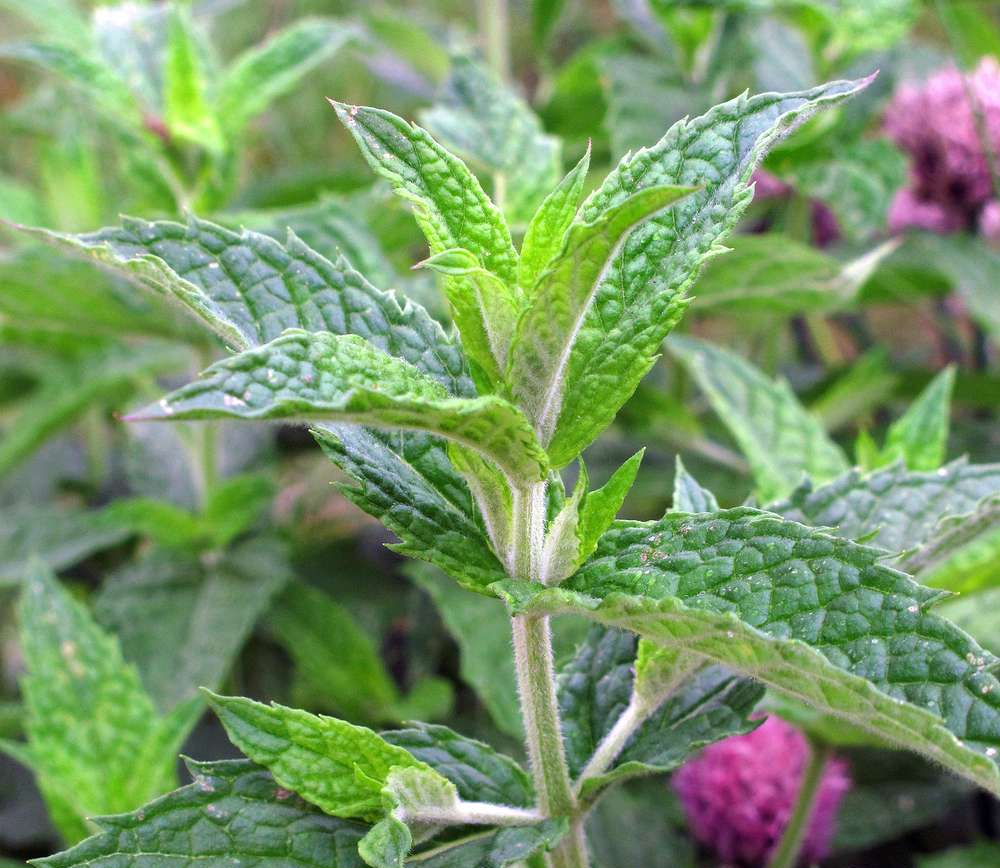peppermint
Possible health benefits
Peppermint is a popular traditional remedy for a number of conditions.It is believed to have calming effects.It is used to treat flatulence, menstrual pains, diarrhea, nausea, depression-related anxiety, muscle and nerve pain, the common cold, indigestion, and IBS.
Indigestion
Peppermint calms the stomach muscles and improves the flow of bile, according to the University of Maryland Medical Center (UMM). This makes it suitable for people who have indigestion.However, it should not be used by people with gastroesophageal reflux disease (GERD), which has different causes.
Skin conditions
Peppermint oil is widely used for calming skin irritation and itchiness, as well as reducing redness. Peppermint essential oil should always be diluted before topical use, or application to the skin.A good recipe is one ounce of a carrier oil such as mineral or olive oil mixed with 3 to 5 drops of the essential oil. Before use, test a small amount on the forearm to rule out an allergic reaction.
Headaches and migraines
Applying diluted peppermint oil onto the forehead has been found to be effective in the treatment of a tension headache.
Colds and flu
Menthol, the main chemical component of peppermint, is an effective decongestant. Decongestants shrink the swollen membranes in the nose, making it easier to breathe.Menthol is also an expectorant. Expectorants loosen and bring up mucus from the lungs. Expectorants help people with coughs.
Treating and healing chronic wounds
Research published in the journal ACS Nano suggests that scientists have found a way to package antimicrobial compounds from peppermint and cinnamon in tiny capsules that can both kill biofilms and actively promote healing.
Medicinal uses
Among the diversity of plants, Mentha piperita (Lamiaceae family) is one of the herbs most widely used worldwide, with a long history of safe use in medicinal preparations. Its leaf is used as a remedy for common cold, inflammation of the mouth, pharynx, liver, as well as disorders in the gastrointestinal tract such as nausea, vomiting, diarrhea, cramps, flatulence and dyspepsia. It is also used as antioxidant, antimicrobial, antiviral, anti inflammatory, and anti-carcinogenic. Plant is known for having several phytochemicals, including polyphenols that are highly effective antioxidants and are less toxic than the synthetic ones. It is also of great interest for Medicine due to its medicinal activities as antinociceptive, anti inflammatory, antimicrobial and antioxidant properties. The presence of flavonoids such as eriocitrin, narirutin, hesperidin, luteolin-7-O-rutinoside, isorhoifolin, diosmin, rosmarinic acid, and 5, 7-dihydroxycromone-7- O-rutinoside exert anti-allergic effects.
ANTIOXIDANT PROPERTIES
Lack of antioxidants in organism, promotes the oxidative stress due to the presence of free radicals, which in turn causes a variety of pathological conditions. Antioxidants, which are an integral part of biologically active substances, are of great interest. They can reduce mutagenic influence, regulating the oxidation process of free radicals. According to literature, a number of biologically active substances, which are produced by plants and have antioxidant activity, are known. They include α-tocoferol (vitamin E), tannins, ascorbic acid (vitamin C), β- carotene, a number of protein compounds with enzymatic activity, flavonoids, polysaccharides, terpenoids, polyphenol compounds and etc.Mentha piperita have antioxidant properties due to presence of several bioactive substances. The antioxidant properties of Mentha piperita are important to prevent inflammation process and dyslipidemia as well as several chronic degenerative diseases as diabetes and cardiovascular diseases.
ANTIMICROBIAL EFFECTS
The constituents of the essential oil of M. piperita have different modes of action in bacteria and eukaryotic cells. They exhibit strong bactericidal properties, and in eukaryotic they modify apoptosis and differentiation, interfere with the post translational modification of proteins and induce or inhibit certain liver detoxifying enzymes. Antibacterial activity of plants may be attributed to the presence of phenolic compounds that behave as prooxidants because they undergo high oxidation, so instead of eliminating the reaction of free radical chain, they lead to generation of superoxide and quinones. The most easily oxidized phenolics such as quercetin and gallic acid have pro-oxidant activity but tannins, due to the high molecular weight have little pro-oxidant activity.

COMPOSITION OF THE LEAVES
In the extract of the leaves of M. piperita are present mainly flavonoids and phenolic acids and some of the compounds are menthol, menthone caffeic acid, acetaldehyde, amyl alcohol, methyl esters, limonene, pinene, cardiac glycosides, phellandrene, cadinene, pugelone, and dimethyl sulfide. The constituent features include alpha-pinene, sabinene, terpinolene, ocimene, diterpenes, gamma-terpinene, steroids, fenchene, alpha- and beta-thujone, coumarin, citronellol, carotenes, tocopherols, betaine, choline, saponin, tannins, and other components.Mentha piperita has demonstrated the presence of a wide variety of bioactive compounds that represent a rich resource in phytochemicals of great interest to to treat several pathologies. Some of the benefic biological effects show that this plant may play an important role as antioxidant, antinociceptive, anti inflammatory, antimicrobial, anti-carcinogenic, antiviral, anti-allergic and antitumorigenic, indicating its utility in the prevention or treatment of several diseases. Furthermore, we may say that Mentha piperita is a promising plant that may offer low-cost alternative strategy for the use in Medicine and in food industry.


